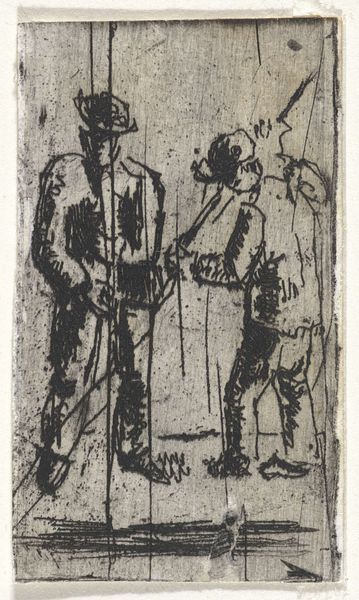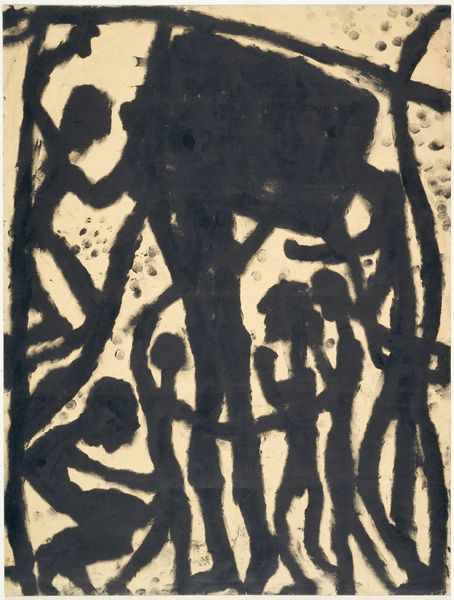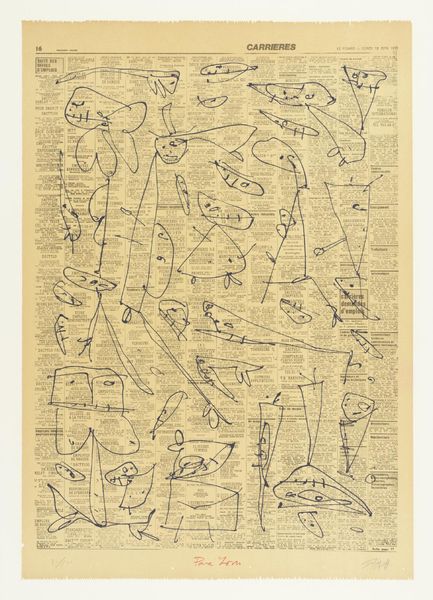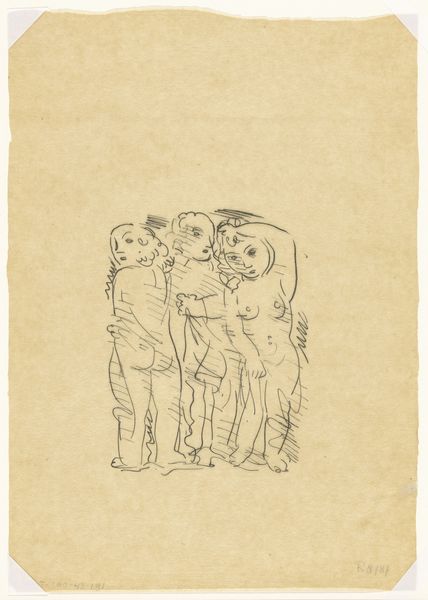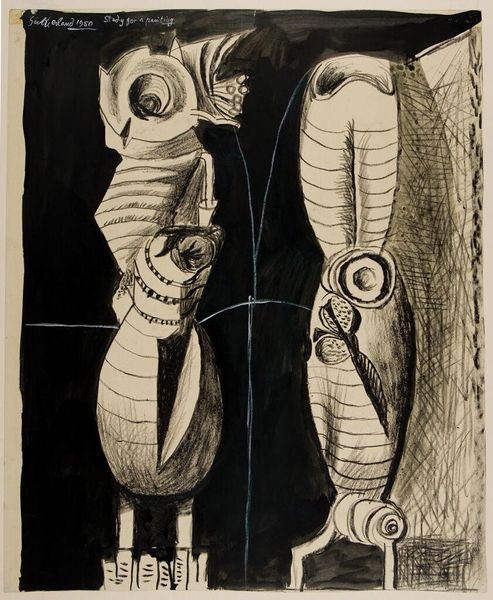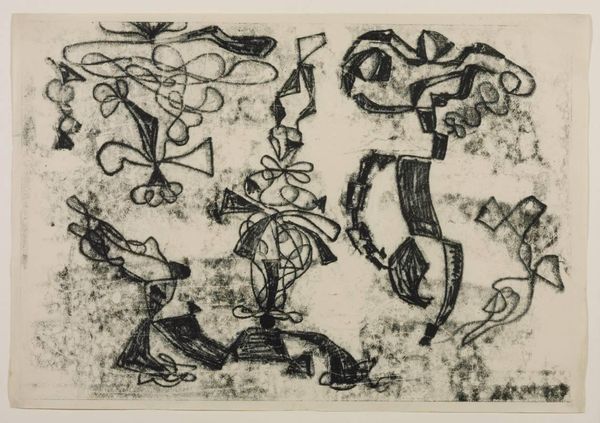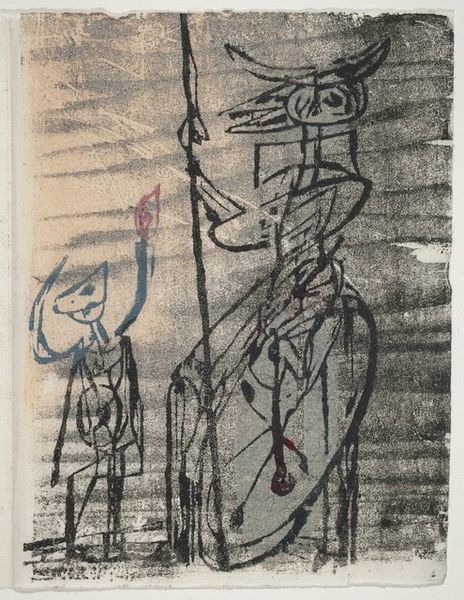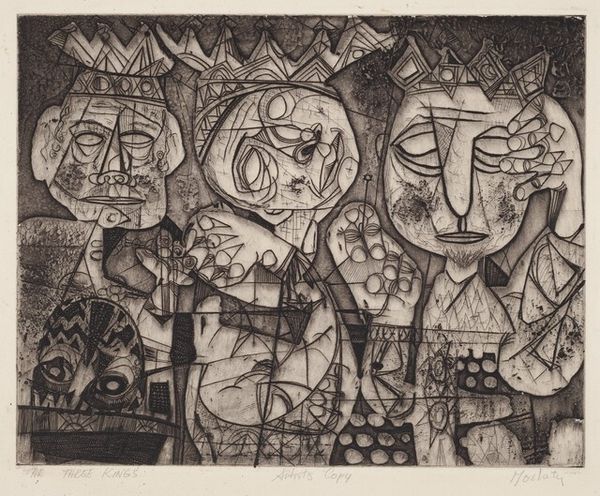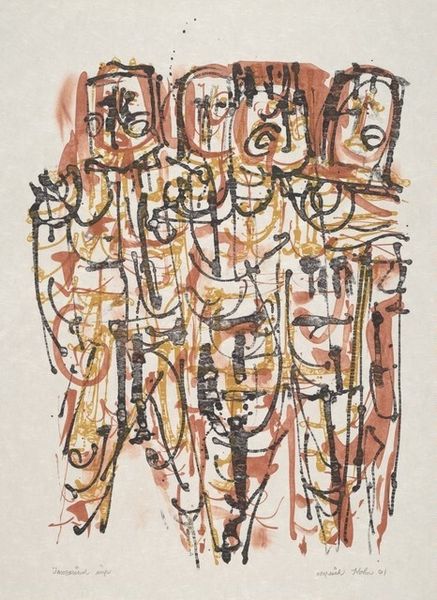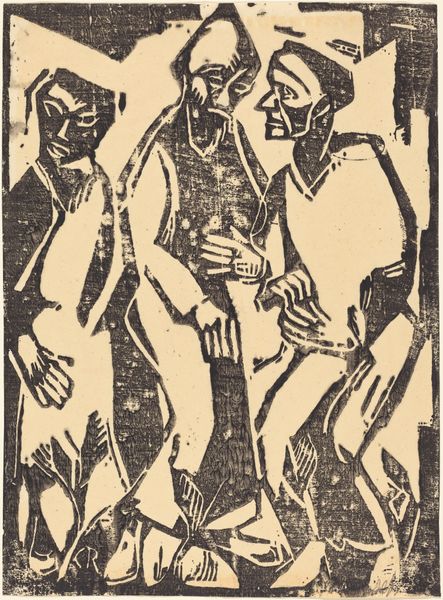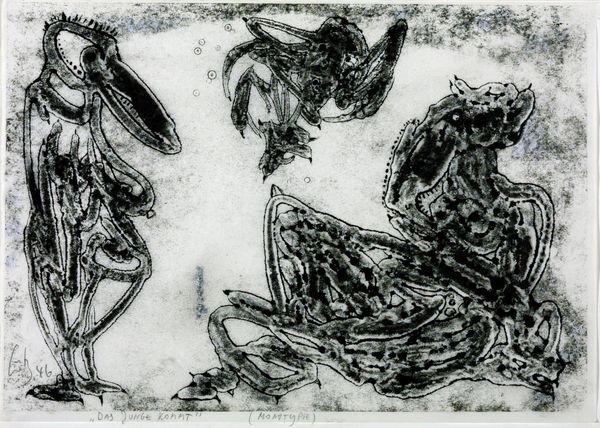
drawing, ink
#
drawing
#
ink drawing
#
figuration
#
abstract
#
ink
#
modernism
Copyright: Public Domain: Artvee
Curator: What a chilling image! This grouping of figures outlined in brown ink is spare yet haunting. Editor: Indeed. Let's delve into Walter Kurt Wiemken's "Skelette," created in 1932. It's striking how Wiemken uses ink to give life to symbols of mortality. I'm immediately drawn to the unsettling mood, a kind of danse macabre but abstracted. Curator: Absolutely, it's less about the literal dance of death and more about the emotional weight of finitude. The skeletons remind me of primitive death masks, or totems used to mediate the terror of mortality. Editor: I find it interesting to consider its placement within the broader scope of art history. The early 1930s was a time of significant economic and political upheaval in Europe, which invariably found its way into artistic production. Is this a metaphor, perhaps, for the social decay Wiemken witnessed? Curator: That's plausible, viewing it through the lens of social and political decay. Though to my eye, I also feel the weight of personal struggles as a cultural force shaping this symbolic imagery. The rawness of the drawing is profoundly intimate. Editor: It's certainly not a sanitized vision of mortality. The abstract, almost childlike quality adds to its impact, circumventing traditional notions of artistic skill in favor of something more direct and visceral. It does make me consider how art functions as a historical mirror to society. Curator: Precisely. I also sense elements of shamanic symbolism, figures invoking spiritual or ancestral powers, a bridge between worlds of the living and dead. I'm interested in how Wiemken uses archetypal symbols to engage our deepest fears about the ephemeral nature of life. Editor: I concur. As a modern artist, Wiemken seemed very conscious of using these motifs of death, skeletons, to make strong cultural commentaries on society at large. Its simplicity, yet direct symbolism, continues to resonate today. Curator: A resonant meditation on mortality, indeed. Thank you for shedding your socio-historical light upon this deeply symbolic and evocative piece. Editor: The pleasure was all mine. This exercise emphasizes the powerful ways that the symbols used by Wiemken express deep feelings.
Comments
No comments
Be the first to comment and join the conversation on the ultimate creative platform.

